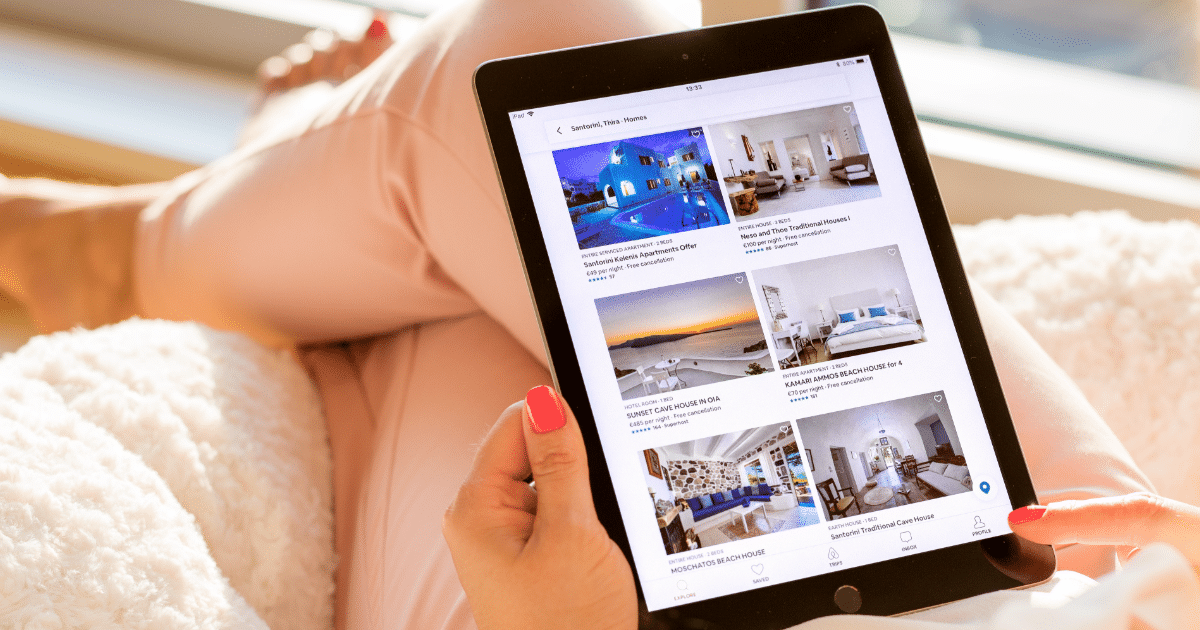Display Advertising Advantages and Disadvantages in B2B Marketing
August 8, 2025

Display advertising is a powerful lever that can pull entire B2B marketing strategies into motion. But here’s the catch: It’s not about simply placing an ad on a webpage and hoping for the best. For display advertising to truly work, it has to be strategically integrated into a larger, multi-dimensional campaign. Think of it as the glue that binds your brand’s presence across digital touchpoints, engaging your audience at precisely the right moment in their buying journey.
Here’s the surprising part: Despite being one of the oldest forms of online advertising, display ads are thriving in the age of programmatic marketing, data-driven targeting, and AI optimization. They aren’t just static banners anymore; they’re dynamic, data-powered pieces that evolve with each interaction, moving from awareness to consideration to conversion, often without you even realizing it.
The true power of display ads isn’t just about pushing products, it’s about building relationships at scale.They converse with your audience, meet them where they are, and guide them to the right decision.
However, like any tool, if mishandled, they can become a costly experiment that alienates rather than engages. In this article, we’ll break down the advantages and disadvantages of display advertising in B2B marketing, as well as the nuances of related strategies.
What are the Advantages and Disadvantages of Display Advertising?
You’ve just launched a new product that’s been in the works for months. Your team is eager, your sales pipeline is ready, and you’ve got a solid marketing plan in place. You hit ‘go’ on your display ad campaign, and the impressions start rolling in. But as the numbers climb, you’re left wondering: Are these just clicks, or are they bringing real, qualified leads? How do you know if your investment is truly paying off, or if you’re simply contributing to the digital noise?
Advantages of Display Advertising
- Broad Reach with Precision – One of the most significant advantages of display advertising is its ability to reach a wide audience while still maintaining precision targeting. This dual benefit is what makes display ads so powerful for B2B marketers. Whether you’re looking to increase brand visibility or ensure that your product reaches key decision-makers, display ads allow you to put your message in front of potential buyers at the right time. With data-driven insights, you can target your audience based on job title, industry, company size, and even specific online behaviors. For example, if you’re marketing a SaaS solution for project management, you can ensure your ads appear to project managers, VPs of operations, and CTOs within your target industries. This combination of wide reach and narrow targeting makes display advertising ideal for top-of-funnel (TOFU) awareness as well as middle-of-funnel (MOFU) lead generation.
- Measurable Impact – Another key advantage is the ability to track performance and ROI. With display advertising, you can track everything from impressions to click-through rates (CTR), giving you actionable insights into what’s working and what isn’t. This transparency enables marketers to make real-time adjustments, optimize campaigns for better performance, and continually improve ROI. For B2B marketers who rely heavily on data, these measurable results are essential for justifying spend and fine-tuning their strategies for maximum impact.
- Engaging Visuals – Display ads are inherently visual, which allows you to create more engaging and dynamic content. In the B2B world, where products or services may be complex, visual ads (whether static banners, animated gifs, or videos) can break down complicated concepts and present them in a way that’s easy to digest. With the right visuals, you can effectively communicate your value proposition, highlight product features, or even tell a story in a way that resonates with decision-makers.
Disadvantages of Display Advertising
- Ad Fatigue and Blindness – One of the most prominent challenges B2B marketers face with display advertising is ad fatigue. Over time, decision-makers become desensitized to ads, especially when they see the same banners or visuals repeatedly. This phenomenon, commonly known as banner blindness or ad fatigue, can significantly lower the effectiveness of your campaigns. To combat this, B2B marketers must continuously refresh their ad creatives, experiment with new formats, and ensure their messaging is always relevant to the target audience. Without a strategy for keeping things fresh, display ads can lose their impact over time.
- Cost Can Escalate – While display advertising can be cost-effective for certain businesses, it can become expensive, particularly when targeting niche industries or using premium placements. The cost-per-thousand impressions (CPM) model can rack up quickly if you aren’t mindful of your targeting. For smaller B2B companies with limited budgets, display ads may not always provide the same level of return on investment as other more cost-effective methods. It’s crucial to constantly optimize your campaigns to ensure that the budget is being spent wisely. A/B testing and adjusting targeting options can help minimize unnecessary costs while still maximizing your campaign’s reach and effectiveness.
- Potential for Low-Quality Leads – While display ads excel at increasing brand awareness, they can sometimes attract leads that are not as qualified or ready to purchase. For B2B companies looking to generate high-quality leads, display advertising might not always provide the immediate conversions they expect. The key to addressing this disadvantage lies in targeting precision and follow-up strategies like retargeting. By using display ads in conjunction with other tools like email marketing or content syndication, you can guide leads through the funnel and increase the likelihood of conversion.
What are the Advantages and Disadvantages of Spamming Display Ads?
It’s easy to fall into the trap of “Launch display ads!” approach when you’re in charge of driving leads and building brand awareness for a B2B business. With tight deadlines, high expectations, and the pressure to produce immediate results, the solution often feels simple: get your ads live, and let them do the work. But this advertising-centric approach, while effective in some cases, can quickly become myopic, focusing too heavily on ads as the sole solution for driving engagement and sales.
In an advertising-centric strategy, the emphasis is placed almost entirely on paid media, whether it’s display ads, social ads, or sponsored content, as the main driver of visibility, leads, and conversions. It’s tempting because the immediate data (like impressions, clicks, and CTRs) makes it seem like you’re moving the needle. But as with all quick fixes, relying too heavily on ads without balancing them with other efforts, like content marketing or nurturing campaigns, can lead to diminishing returns.
So, while display ads can be a core part of your marketing mix, it’s essential to recognize that the real value lies in integrating display ads with a broader strategy that includes outreach, content distribution, and relationship-building.
Advantages of a Digital Advertising Focused Approach
- Immediate Brand Exposure – Advertising-centric strategies, particularly display advertising, provide immediate exposure to a wide audience. For businesses aiming to quickly raise awareness or promote a new product, display ads can be an effective way to get your message in front of potential customers without waiting for organic growth.
- Highly Scalable – When you’re using display ads as part of an advertising-centric strategy, they are inherently scalable. Whether you’re expanding into new markets, testing new product offerings, or increasing ad spend, the flexibility of display ads allows you to grow your reach as your business grows.
- Lead Generation Potential – Advertising-centric strategies can be highly effective at driving qualified leads. With the right targeting and optimized creatives, display ads can attract decision-makers who are in the right industry, role, and mindset to convert. Moreover, retargeting ads allow you to re-engage visitors who have previously shown interest but haven’t yet taken action.
Disadvantages of a Digital Advertising Focused Approach
- Spamming Ads: A Risk to Brand Perception – While display ads can generate quick exposure, there is a fine line between strategic advertising and spamming. Bombarding your audience with too many ads across platforms can lead to a negative brand perception. For B2B marketers, over-reliance on ads without providing real value, such as relevant content or useful resources, can quickly backfire. Instead, integrating display ads into a broader content strategy that includes email marketing, content distribution, and educational resources can help avoid this pitfall, while still maximizing exposure.
- Cost-Intensive – One of the main drawbacks of an advertising-centric strategy is that it can become cost-prohibitive, especially when targeting niche industries or using premium ad placements. Marketers must balance the quality of targeting with ad spend to ensure they’re getting a good return on investment.
What are the Advantages and Disadvantages of Native Advertising?
Native advertising has become a popular choice for B2B marketers looking to create seamless, engaging content that doesn’t disrupt the user experience. Unlike traditional display ads, native ads blend into the content on the platform they appear on, making them feel less intrusive and more aligned with the surrounding material. It’s an approach that allows brands to tell their story in a way that feels natural and trustworthy, whether it’s in the form of a sponsored article, a recommended product, or an embedded video.
While native advertising can be highly effective in building trust and engagement, it’s not without its challenges. Native advertising advantages and disadvantages:
Advantages of Native Advertising
- Seamless Integration – Native ads are designed to blend into the content of the website, making them less intrusive and more likely to be engaged with by your audience. They often appear as sponsored articles or recommendations, giving them a more organic feel.
- Higher Engagement Rates – Native ads typically generate higher engagement rates because they don’t disrupt the user experience. They tend to resonate better with B2B audiences who prefer to engage with content in a more natural way.
Disadvantages of Native Advertising
- Harder to Measure ROI – Unlike display ads, which provide immediate performance metrics like impressions and clicks, native advertising can be more difficult to track in terms of ROI. Measuring the direct impact of native ads on conversions can be challenging without clear call-to-action (CTA) strategies.
- Risk of Misleading Audiences – If not executed carefully, native ads can mislead the audience by being too subtle or too promotional, potentially damaging trust. It’s essential to maintain transparency and ensure that native ads don’t cross into misleading territory.
- Limited Control Over Placement – While native ads can work well in certain environments, they offer less control over where and how your content appears. Without careful placement, your message might not reach your exact target audience, reducing its effectiveness.
What are the Advantages and Disadvantages of Banner Ads?
Banner ads are one of the most established and widely used formats in digital advertising. For B2B marketers, they’re often seen as a reliable option for generating visibility, especially when budgets are tight or the campaign is part of a larger branding initiative. Whether displayed at the top of a webpage, as a side ad, or embedded in a content feed, banner ads provide a familiar and effective way to get your message in front of your target audience.
Advantages of Banner Ads
- Cost-Effective – Banner ads remain one of the more cost-effective options in display advertising. Their widespread availability on many platforms makes them an attractive option for B2B marketers working with limited budgets.
- Brand Visibility – Banner ads are great for enhancing brand visibility. By consistently placing banner ads across websites relevant to your target market, you can ensure that your brand is seen multiple times by the same decision-makers.
Disadvantages of Banner Ads
- Banner Blindness – The biggest drawback of banner ads is banner blindness, where users no longer notice or engage with the ads due to overexposure. This is especially common with static banner ads that don’t offer engaging or interactive content.
- Low Engagement – Compared to other ad formats like videos or rich media, banner ads tend to have lower engagement rates. To combat this, B2B marketers should regularly refresh banner designs, test different messaging, and ensure they are placed on high-quality websites where the target audience is most active.
What is the Main Advantage of Advertising Using B2B Data?
Disadvantages of retargeting ads include ad fatigue, overexposure, and potential privacy concerns when audiences feel they’re being followed online. What is the advantage of using retargeting ads over other channels? They enable marketers to re‑engage high‑intent visitors who’ve already shown interest, driving higher conversion rates and a stronger return on ad spend.
The true power of display advertising for B2B marketers doesn’t just lie in running ads, it lies in data-driven precision. At the heart of every successful B2B campaign is B2B data, and when harnessed correctly, it becomes a weapon that empowers your display ads to deliver exactly what your audience is looking for, when they need it most.
This is where the magic happens: Instead of blindly casting a wide net and hoping for the best, you use data insights to laser-target your audience, ensuring that your ads aren’t just reaching people, but reaching the right people at the right stage in their journey. By leveraging firmographics (company size, revenue, industry), demographics (job title, role, decision-making authority), and behavioral data (website visits, content engagement, buying signals), you can craft hyper-targeted display ads that aren’t just selling a product, they’re solving a specific problem for a decision-maker, in their exact moment of need.
With data-backed insights, every element of your display campaign, from the creative, to the placement, to the call-to-action, is informed by real, actionable data. This means your ads are no longer just generic messages in the digital noise, they’re relevant, timely solutions that resonate with decision-makers at every stage of their buying journey. It’s about taking the guesswork out of your campaigns and driving results through intelligent targeting.
When you integrate B2B data-powered display advertising, you’re not only increasing efficiency, you’re optimizing your ROI and fostering deeper, more meaningful customer relationships. In a marketplace where every dollar spent counts, data is your most valuable tool. Precision targeting isn’t just a nice-to-have; it’s a necessity for success in today’s hyper-competitive B2B environment. Whether you’re engaging prospects at the awareness stage or re-engaging warm leads, leveraging B2B data ensures that your campaigns are as effective and impactful as possible.
At DemandScience, we understand that data is the backbone of every successful strategy, and we use it to drive campaigns that don’t just deliver impressions, but real connections that convert.
Conclusion
Display advertising in B2B marketing drives brand visibility, driving high-quality leads, and fostering engagement. But here’s the reality: it’s not a one-size-fits-all solution, nor is it enough to simply launch a display ad and call it a day. If you’re relying solely on display ads in isolation, you’re missing the bigger picture.
A linear approach to display advertising, where ads are seen as a singular, standalone tactic, can limit your impact and fail to maximize the full potential of your marketing efforts. Display ads work best when integrated into a multi-channel strategy, where they support and amplify the messages you’re sending across email campaigns, content marketing, social media, and more.
It’s most effective when it’s part of a holistic, multi-channel strategy that adapts to your audience’s needs at every stage of their journey. Just think about the possibilities.
Let us help you set up a display strategy that will maximize your ROI.
Supercharge your B2B marketing strategies today.










